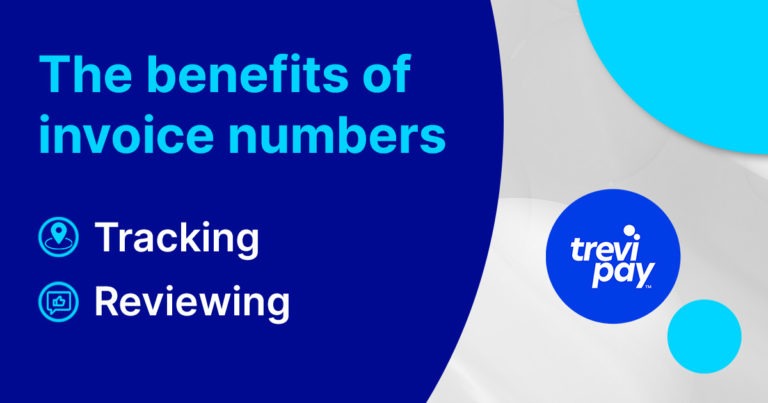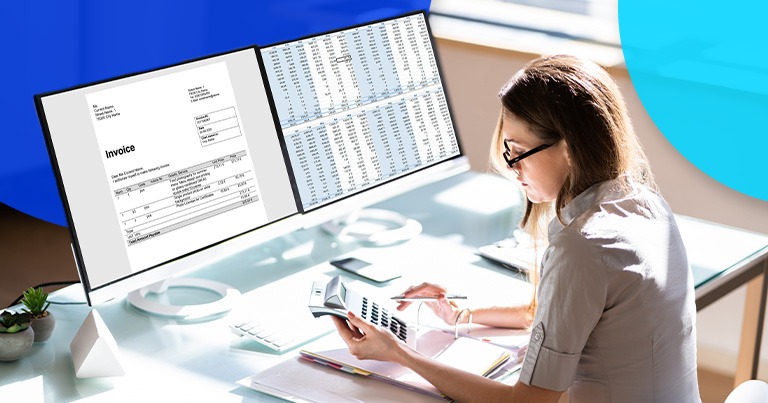Every invoice is unique and needs a unique identifier number (an invoice number).
Having a well-organized and efficient invoice numbering system will ultimately help your business get paid faster.
The first step to achieving this is to devise a clear and efficient invoice numbering system.
Let’s take a closer look at invoice numbers and the best practices for generating them.
What is an invoice number?
An invoice number is a unique code assigned to a specific invoice in order to record and identify it. It can include letters, numbers, and special characters such as slashes and hyphens.
Invoice numbers are consecutive or sequential (i.e., following a logical sequence). They are also a legal requirement for all invoices.
They usually appear near the top of the invoice and (if in digital format) as its file name.
The benefits of invoice numbers
Invoice numbers help humans and software quickly record, organize, and recognize invoices.
This applies to both the sender and the receiver of invoices. For example, during the dunning process, an invoice number enables clients to retrieve specific invoices more quickly.
Invoice numbers are particularly useful for two facets of invoice management.

1. Tracking
Keeping up with what invoices have been issued can be difficult.
This matters whether you are a small business owner managing your own accounts or part of a busy, dedicated accounts department.
Failing to accurately keep track of invoices is particularly important when it comes to overdue invoices.
It can quickly lead to cash flow problems that will have knock-on effects on other aspects of business operations.
Invoice numbers help with payment tracking and project information. This is an essential part of the invoicing process, whether that’s invoice issuing or invoice processing.
2. Reviewing
Invoice numbers make reviewing invoices and accounts generally a lot simpler.
A sequential numbering system can be designed with specific clients or types of clients in mind, as well as timeframes and even project scales. You could, for example, identify all minimum charge invoices with a specific section of code.
Done in the right way, invoice numbering makes reviewing different business segments, time periods, or business relationships much simpler and more efficient.
How to generate an invoice number
How you generate an invoice number depends in part on the number of invoices you issue. A simple invoice numbering system will suffice if you have a small pool of clients.
But future scaling potential should always be kept in mind. A numbering system designed for a handful of clients won’t work as well when your customer base expands.
Before we introduce some possible ways to create invoice numbers, we must first stress that generally, there is no set rule on exactly which numbering system you should use other than it should not contain gaps.
Exceptions might occur in specific jurisdictions. For example, in the UK, invoices which include VAT must be sequential.
Otherwise, there are best practices and general business norms, but ultimately it is up to your business which numbering system you choose.
1. Using just numbers
One of the simplest ways to generate an invoice number is by date and then the number of the invoice in its sequence. For example:
- 2 0 2 3 0 1 [ year followed by the sequential position of the invoice]
If there is a high volume of invoices each month, adding a more detailed date is useful:
- 2 0 2 3 0 7 0 1 [ year, month, the sequential position of the invoice]
This method is useful for keeping track of when invoices were sent. They can also be updated each year (and month), which makes retrieving specific invoices easier than simply using the year.
The date format above (YYYY/MM) helps keep files organized chronologically, but you can use whichever date format you prefer, including the ones with days.
One problem with the above sequences is that the sequence number of the invoice (01) might get confused with the month or day. It also fails to identify what company is associated with each one.
You can assign a client number and even a project number to each invoice number. For example:
- 2 0 2 3 0 7 0 1 0 1 0 1 [ year, month, client number (01), project number with that client (01), the sequential position of the invoice (01 – i.e., the first project with that client)]
2. Using numbers and letters
Having a unique invoice number is useful. But adding letters to represent the recipient company’s name makes it even more convenient for future reference.
For example, if invoices sent to ‘Company A’ and ‘Company B’ might look like this:
- CA202301 [Company descriptor (Company A), year, sequential position of the invoice]
- CB20230701 [Company descriptor (Company B), year, month, sequential position of the invoice]
Here, each has been reduced to the shorthand ‘CA’ and ‘CB.’
Letters do not need to be this limited. In fact, these example numbers aren’t particularly distinct.
Other client companies might also have names beginning with a C. So, a more descriptive shorthand is advised, such as CMYA, and CMYB.
Letters can also be used to distinguish invoices from other documents, such as credit notes or quotes.
- INVCB20230701 [Document descriptor (invoice), company descriptor (Company B), year, month, sequential position of the invoice]
3. Using numbers, letters, and separator characters
Separator characters such as a hyphen (-), forward slash (/), or underscore (_) are very useful for making invoice numbers easier to read by humans.
Consider the visual difference between the following:
- INVCMYA202301
- INV-CMYA-2023-01
Separator characters also help avoid mistakes caused by the type of errors sequential numbers and letters can cause.
For example, if a client number is the same or similar to part of a date number, the two might get mixed up if listed side-by-side without a separator.
How does invoice numbering work with incorrect or changed invoices?
When you are regularly issuing invoices, mistakes can happen.
You might accidentally request duplicate payments, assign the wrong payment terms, etc. In these instances, there is a simple solution: issue a credit note.
Credit notes are documents you can issue for mistaken or changed invoices. They list the amount owed to a client, which the client can redeem at a later date.
By using credit notes, you can maintain a clear and consistent invoice numbering record.
What other information is essential for invoices?
Besides assigning invoice numbers to each invoice, the following information is all essential to add to each invoice.
- Your company name, address, and contact information
- Your client’s company name, address, and contact information
- Details of products and/or services provided, including descriptions, supply dates, and costs of each item
- The date the invoice was issued
- The total amount owed (including any tax-related information if applicable)
Conclusion
Invoice numbers are an integral part of the invoicing process.
Every single invoice must have its own unique invoice number, a kind of individual invoice ID. This is not only useful for accounting but also a legal requirement.
How you assign invoice numbers is important. Creating a clear and logical invoice numbering system will help you track payments and review your invoices and accounts more generally.
There are many ways you can go about it. A combination of numbers, letters, and separator characters will help you implement a numbering system that can scale effectively.
The information contained within the invoice number can include the date, customer’s name, project number, and chronological sequence number of the invoice.
Once you have a good invoice number system, your business and your clients will benefit from the clarity and convenience it brings.






